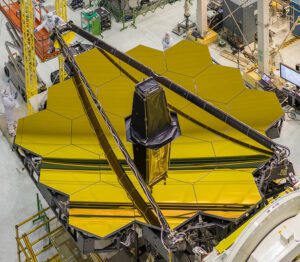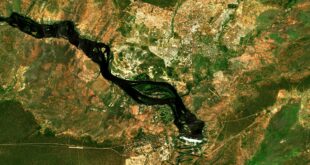
Edinburgh, 10 June 2022. – A micrometeoroid, the size of a dust grain, slammed into one of the James Webb Space Telescope’s 18 primary mirror segments at high speed, causing a noticeable effect on its performance, NASA said. This was the fifth impact detected since Webb’s launch five and a half months ago.
Engineers have expected such encounters given the telescope’s open design, however, this particular impact was larger than what the pre-flight models predicted. After analysis, the US $10 billion observatory’s C3 mirror segment had to be repositioned to counteract most effects of the impact. NASA said the telescope is still operating better than pre-flight requirements.
Webb is the most advanced, most sensitive infrared observatory launched to date, equipped with a 6.5-meter-wide primary mirror. Its 18-segment gold-coated beryllium mirror is even capable of detecting the faint light of first generation stars and galaxies.
The micrometeoroid impacts have not caused major delays and NASA is still planning to publish the first color images from the telescope in July. The Agency’s engineers and scientists will fine-tune their models according to data retrieved from the impact to maximize the future imaging performance of Webb.
 SpaceWatch.Global An independent perspective on space
SpaceWatch.Global An independent perspective on space




